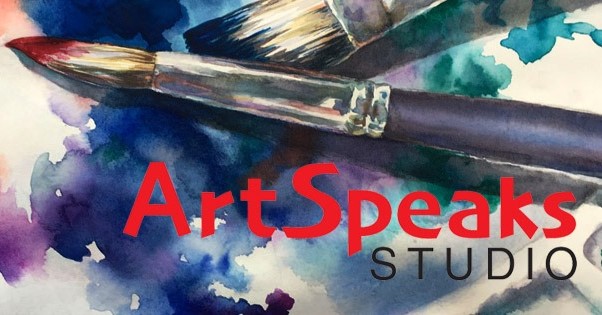Artists will all have slightly different lists of the Organizing Principles of Art because of semantics, but the list I use is Harmony, Conflict, Variety, Dominance, Repetition, Balance, Gradation. Today I want to talk about Balance.
In Two-Dimensional art, balance is virtual, not actual, but when an element is juxtaposed next to another version of that element, they will have different visual weights. To remind you, the Elements of Design, the most basic components of any artwork are Line, Size, Shape, Value, Color, Texture, and Space. When large textures are next to small textures, round shapes are next to angular shapes, large shapes are next to small shapes, or colors that contrast are next to one another, there will be contrast and that contrast means that one area will have more visual weight than another on the picture plane.
So, artists need to use balance as a way to establish equilibrium on the picture plane. To do that, they need to understand how to balance areas of different weights. Today we are going to explain how to do that.
Using a metaphorical seesaw to make the concept visual, there are three kinds of Balance,
Formal Balance where both sides are equal
Radial Balance where everything revolves around a central point (which will also tend to be formal balance as well)
Ideally, as an artist, you want your painting to be balanced, but not predictable which formal balance and radial balance can readily become. That predictability provides stability which can be a virtue, but artists have to work hard to make radial balance and formal balance interesting as well.
And Informal Balance is where both sides are equal, but not identical. There are a number of ways to achieve this:
In general, warm colors have more weight than cool colors.
Dark colors have more weight than light colors.
Bright colors have more weight than dull colors.
And it takes more of a duller complementary color to balance its brighter complement as in this bright blue ball and the dull orange.
And any time one version of an element is in high contrast with a larger proportion of the same element in a different version, that will become heavier and the focal point. For instance, in this photograph of drought fractured ground, the small light shape in the upper left becomes the focal point because it is a small, light, angular shape among darker and larger shapes.
So, how does all this work in a work of art?
As you can imagine, this all gets tricky when you are actually designing a painting that has large and small shapes, angular shapes and rounded ones, small and large textures, light and dark colors, bright and dull colors etc. In a sophisticated painting the relative weights are not this simple. You may have a lot of small bright shapes but one big, dull shape and that may have greater weight in the artwork. The relative proportion of an element that is included and its position in the composition can determine its weight.
Nick Long, “Sole Survivor,” Watercolor, 18” X 18”
In this piece that was in the 2021 Member Exhibition for the National Watercolor Society, the artist has created a painting that is all about balance based on contrast. Please notice that the bright yellow and red of the buoy contrasts against the dull colors of the water, the geometric shape of the buoy contrasts against the organic shapes of the foam and the waves in the water. Notice the placement of the buoy is over to the right with all the darker and duller balances that smaller shape.
Achieving balance can be problematic because you need to know where the weight is. And that weight should be centered at the focal point. Then other versions of the same elements can be placed in other parts of the composition to counter the weight of that element.
I hope this information about how balance is used in two dimensional artworks is useful to you and that you are able to achieve balance in your own work. Until next time, happy painting!
https://www.youtube.com/watch?v=KBmDhBu6jZI&ab_channel=ArtSpeaksStudiobyKayByfield





Comments